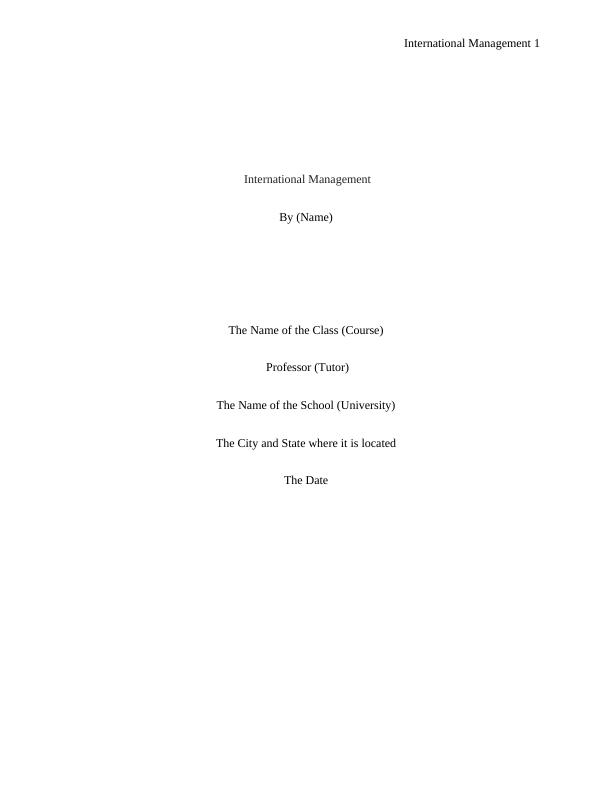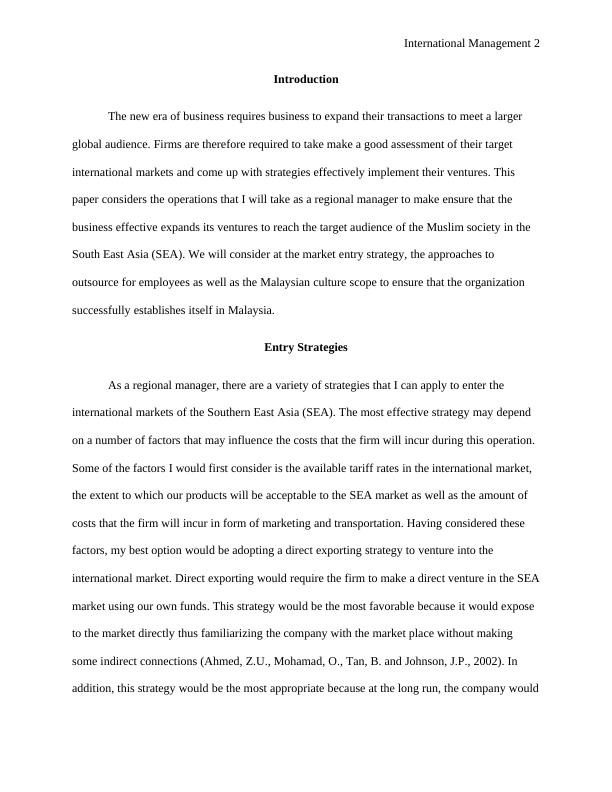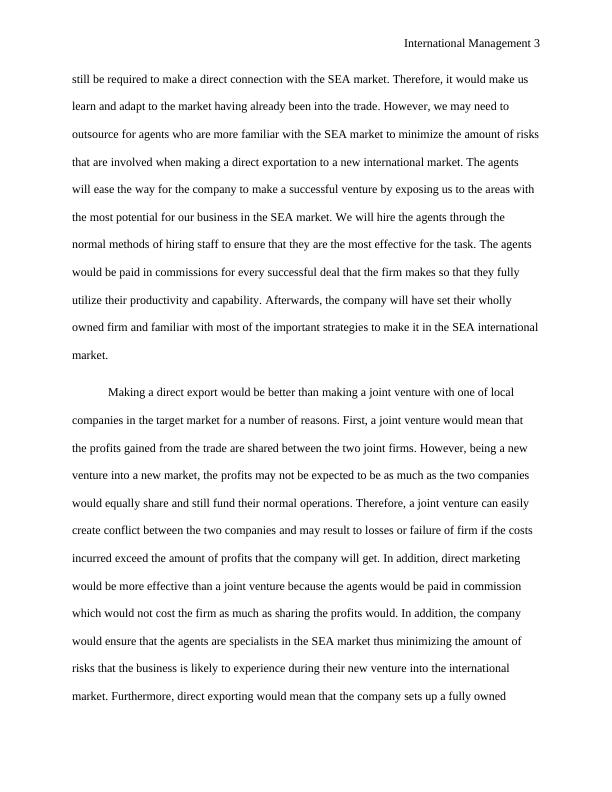Ask a question from expert
International Management: Strategies for Expanding to the SEA Market
9 Pages2402 Words243 Views
Added on 2019-10-18
About This Document
This paper discusses strategies for expanding to the SEA market, including entry strategies, staff recruitment and engagement, and understanding Malaysian culture.
International Management: Strategies for Expanding to the SEA Market
Added on 2019-10-18
BookmarkShareRelated Documents
End of preview
Want to access all the pages? Upload your documents or become a member.
Global Marketing Market Entry and STP for DV8 Leather Company
|13
|2947
|313
Internationalization and Market Entry Mode: A Review of Theories and Conceptual Framework
|7
|1705
|109
Expanding Business in the Global Market: A Case Study of SKD Jewelers
|16
|3135
|498
International Marketing Strategy - Armani
|9
|1764
|180
Economic, Political and Legal Environment of Talley's Group Limited : Report
|11
|4105
|195
The International business environment
|14
|3219
|10


